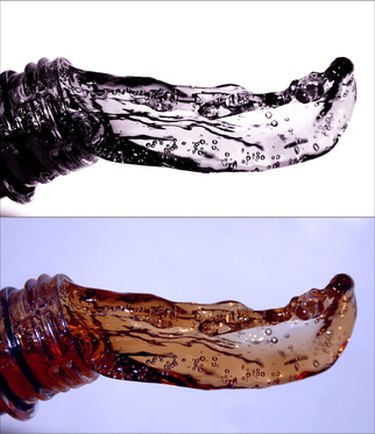Things You'll Need
Sterile glass jar
Water softener
Water filtration system

Well water taps directly into the ground water source by your property without going through a community filtration system. That means the water coming through the pipes is full of sediment from the ground, including dirt and many minerals. Most of the elements settle out at the bottom of the well; as long as the water levels remain adequate they won't be disturbed and included in the flowing water. However, fresh, unfiltered water will never be completely free of the dirt and minerals from the surrounding soil. Some are simply smelly or taste bad; others are downright dangerous.
Step 1
Collect a sample of the water from your faucet in a clean, sterile glass jar. Take the water sample to your local agricultural extension. Contact the county offices of your area for the people to contact to get a free water test for your home. This test will determine if the water is at least safe to drink, and what elements are in the water.
Video of the Day
Step 2
Get your outside well inspected by a licensed contractor. They will check the pipe casing that leads down into the well and the borehole. They can also perform tests to see if the cement casings, or base materials at the bottom of the well that provide drainage of sediments, are in good condition.
Step 3
Shock chlorinate your well water, or the pipe lines inside the house, if the water test returns indicate a bacterial infection. Bacteria can cause your water to change color over time, develop an odor like spoiled eggs, or turn rancid and have a bad taste. Another indication that your system needs to be shock chlorinated is a slimy buildup on the inside of the toilet tank, or around the water pump. This type of bacteria can also build up on the inside of house pipes, and be the source of the problem.
Step 4
Add a water softener system to your incoming water pipes before the spot where they branch off to go to various areas in the house. This is most helpful for the average home that passes a water test for safety, but still has water that is discolored or smells from heavy metals or elements. The most common type of water softener systems use hard rock salt to cleanse the water before it enters the home.
Step 5
Install a reverse osmosis system for water that includes an overabundance of natural fluoride, sodium, or sulfates. Sodium and sulfate can also be controlled by demineralization or distillation systems. These types of filtration systems replace or work alongside the hard rock salt water softener.
Warning
If you are unsure of how to use shock chlorination on your ground water source, have a professional perform the procedure so you are ensured of the safety of the water. Check with your local zoning office before performing any chemical solutions on outside water sources. Some counties demand a professional perform any procedure involving the ground water source, or underground wells.
Video of the Day